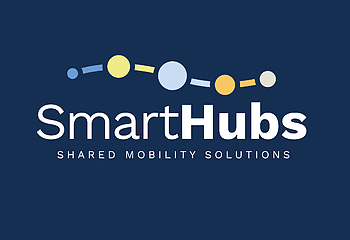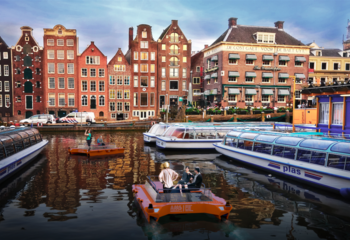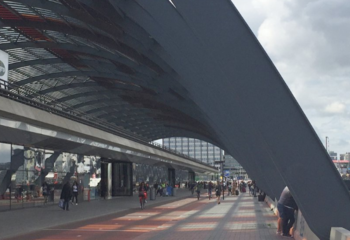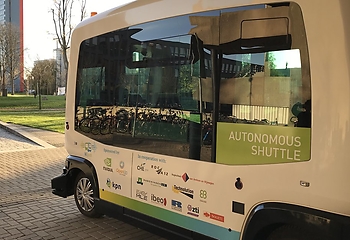Given the competing demands for the use of public space and their impact on livability and accessibility, the City of Amsterdam, like large metropolitan areas all over the world, is urgently seeking new mobility solutions. The goal is to shift people out of cars towards public transport, walking and cycling to keep cities livable and citizens healthy and mobile.
Recent developments in ICT, the increasing availability of real-time traffic data, and the full-scale adoption of smartphones are creating new opportunities for seamless multi-modal Urban Mobility services for citizens: connecting shared mobility, public transportation, ‘autonomous’ cars, and bikes. In Amsterdam, the increased availability of mobility data about people exploring the city by walking or cycling offers better insights for (re-)designing public space, making better use of existing infrastructure for better flows of people.
AMS Institute works on the theme of Smart Urban Mobility and aims to find solutions on the following topics:
- MaaS and public transport: User-driven Mobility as a Service concepts and innovative public transport solutions to make going from A to B as seamless as possible.
- Active Modes: Bike and pedestrian flows and prototypes crowd monitoring tools to create safe and pleasurable experiences for both visitors and citizens
- Autonomy: Driverless vehicles, both on the street and in the water and their impact on urban design to create a better quality of life.
- Mobility hubs: Points in the urban and mobility network that combine various activities to realize more efficient movement of people and goods in an attractive and accessible urban environment.
- Data: New ways of collecting and fusing data from various sources with different scales, times and granularity to find new patterns, connection and proof for mobility solutions.























